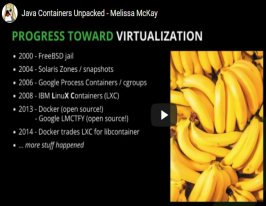What does a Java Developer Need to Know about DevOps? @Denver JUG
JFrog's Melissa McKay talks with Denver Java Users Group!
September 14, 2022
< 1 min read
A day in the life of a Java dev includes coding up new features and fixing bugs. But what happens after you’ve committed your code, and why would/should a developer care?
The process of developing and delivering an application to production can be an overwhelming task with a number of steps. Melissa will explain the DevOps methodology, discuss DevOps implementations, and walk through what all is involved. After learning about dependency management, CI/CD, supply chain security, production packaging and updates, it will be clear why a Java developer would (and SHOULD!) want to be aware of what is going on in their software delivery pipeline. Learn how a strong knowledge of DevOps will inform and guide your decisions as a developer!






